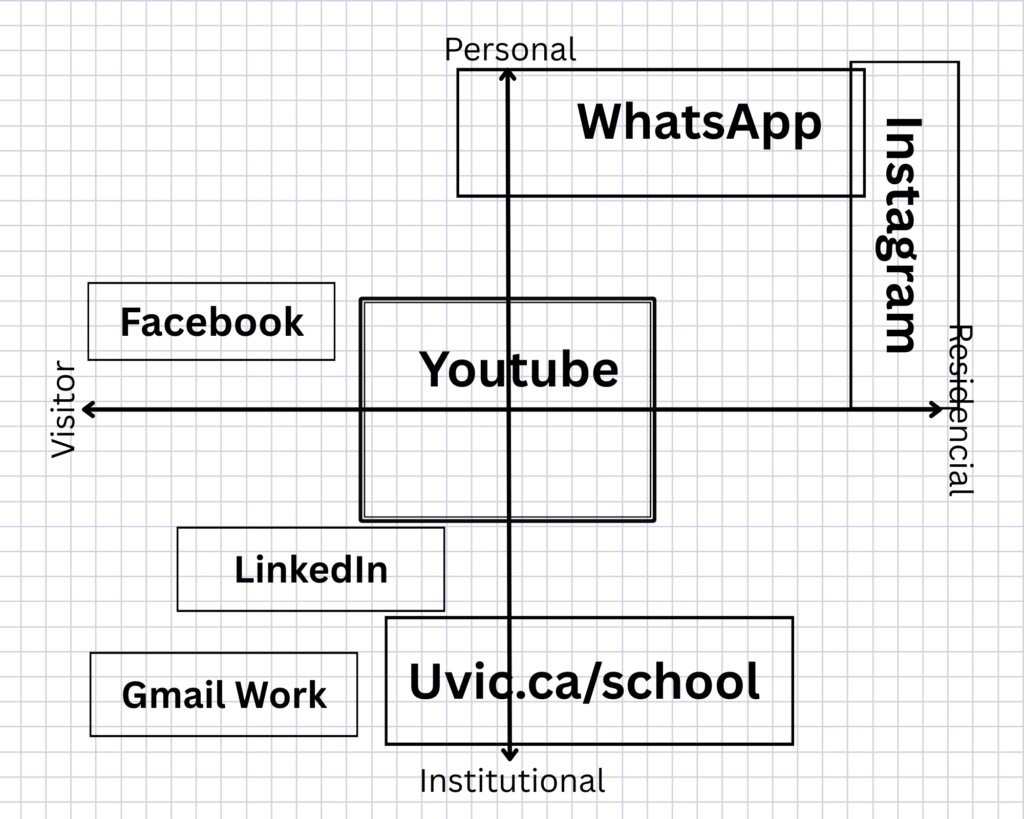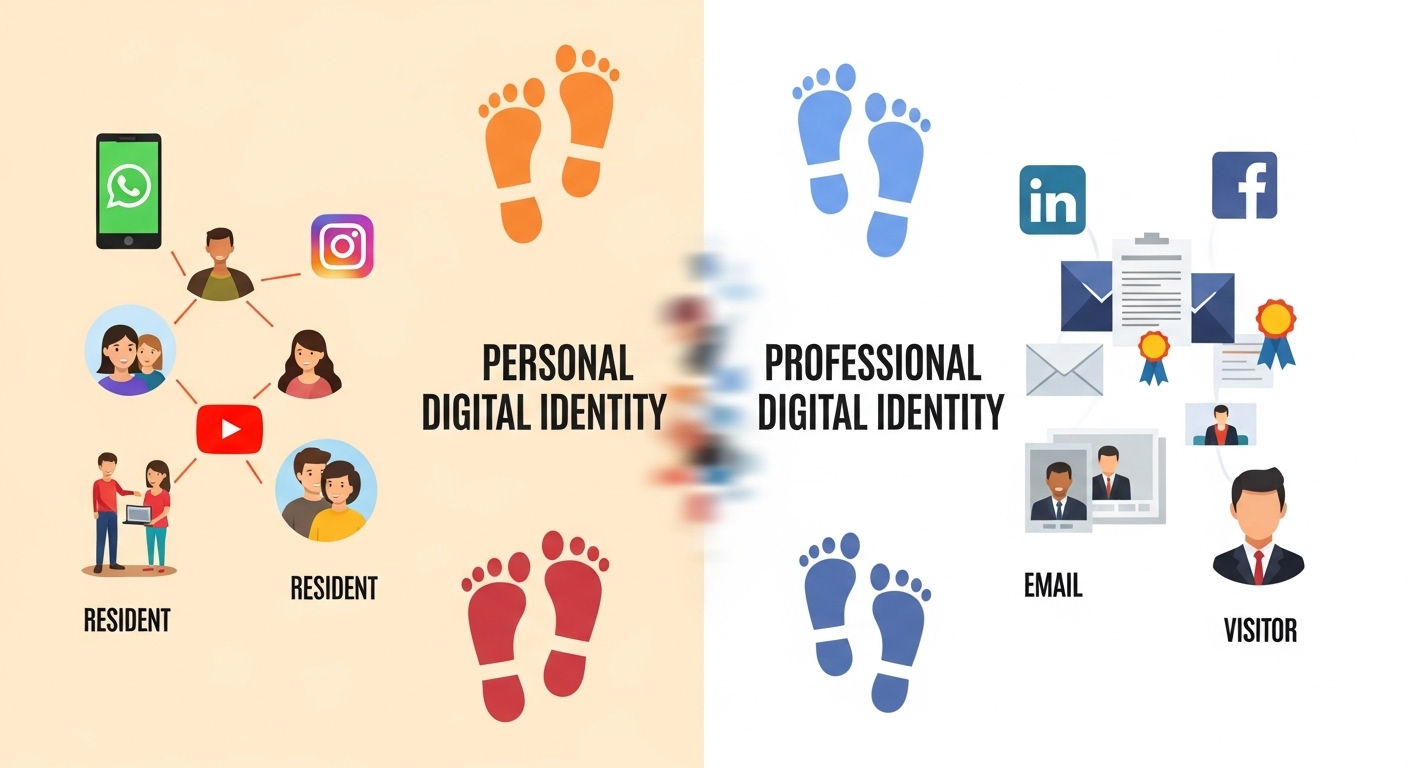My Personal and Professional Digital Identity
My Personal Identity
My digital identity is divided between personal and professional spaces, but numerous times, the line between both gets blurry. My personal digital identity gives a reflection of my personality, relationships, and ideas. Platforms such as WhatsApp, Instagram, and YouTube dominate my personal digital identity. On these platforms, I connect with friends and family, share my ideas on Instagram, watch cultural and entertainment videos on YouTube, or sometimes I do doomscroll on Instagram.
My Professional Identity
My professional digital identity is more intentionally presented in spaces such as LinkedIn, Email, and Facebook. On these platforms, I post as a student sharing my thoughts and ideas on a broader scale, and I show myself as a developing professional who is preparing for future opportunities. I like to share my achievements, interact with my peers, and other professionals in my field that can help me grow academically and professionally.
Differences and Tensions
Audience and purpose are the main aspects that differentiate between my personal and professional digital identity. Personally, I communicate with my trusted circle of peers, friends, and family, whereas on the other hand, I think about a wider audience when I am posting professionally, which includes my professors, colleagues, or employers. However, they are not completely separate from each other because the information that I share online sometimes gets spilled in both of my identities, and due to this overlap, sometimes tension arises. For example, I take caution in sharing my strong personal opinions online, because I am often worried about how they might get perceived in a professional context. It reflected the importance of intentionality while curating our online presence.
Visitors and Residents Model
The Visitors and Residents Model gave a deep dive into my engagement across the various social media sites. In this model, we can understand how we engage with various digital spaces along the spectrum instead of just dividing into personal and professional.
- As a Visitor, I visit a platform with a specific task in my mind, and I leave after completing my task without interacting much and leaving less digital trace. For example, my usage of LinkedIn and Instagram is this way – I post my ideas, update my profile, and leave. I don’t stay on these platforms much longer to build conversations and connections.
- As a Resident, these are the platforms where part of my identity lives. I stay longer on these spaces to interact, contribute, and maintain the ongoing presence at the same time. Spaces such as WhatsApp and YouTube, where I engage in conversation regularly and connect with people in meaningful ways.
What I learnt from this model is that my professional digital identity is currently visitor-oriented, whereas my personal identity is more resident-oriented. Now, I wonder if I should become more of a resident in my professional spaces as well, which will help me build stronger connections and growth in professional life.

Conclusion
In the end, I aim to keep my professional and personal digital identity on separate shelves and manage them thoughtfully. They are part of mine, and by practicing more caution with the awareness of my audience and context, I can build my digital presence, which will reflect authenticity and support my personal and professional goals.
